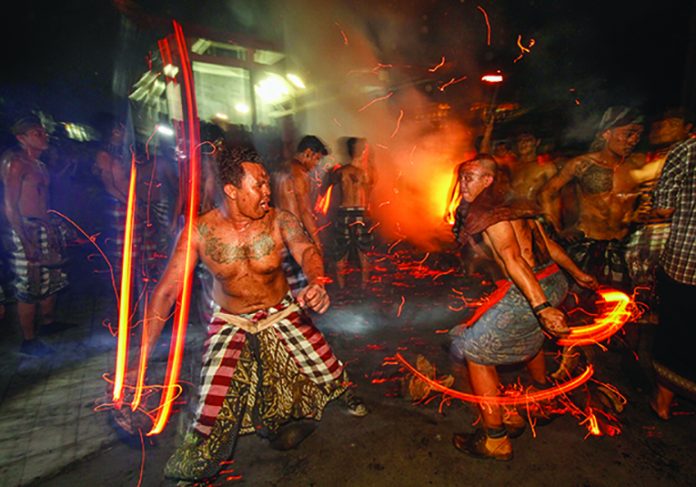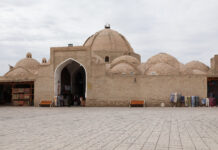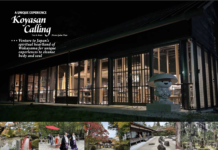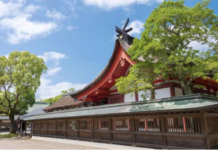Come Nyepi, Perang Api – a traditional fiery ritual to banish old wrongs – is all the rage in remote villages
Text and Photos Lester V. Ledesma
It’s as hot as Hades in the typically sleepy village, and a massive bonfire of coconut husks and dried palm leaves crackles and hisses, its orange glow illuminating a tiny but crowded community square. Men are gathered around the blaze, clad in nothing but checkered sarongs, whooping and screaming with their hands in the air. Fists pound bare chests glistening with sweat.
It’s almost Nyepi. It’s time for the fire war.

Perang api is one tradition few Balinese celebrate, and fewer outsiders know about. While the practices associated with the Hindu New Year’s Eve are well documented – a day of enforced silence, fasting and meditation – this little-known ritual takes place at 6pm in a handful of neighborhoods in central Bali on pengrupukan, the day preceding Nyepi.
Related: Spiritual Skin
Perang api, literally “fire fight”, is said to have originated from the 16th century, when the Karangasem Regency was struck by a plague. Fearing the work of evil spirits, locals performed an exorcism by throwing burning coconut husks at each other. Those hit by the sparks were believed to be cured, thus cementing the beginnings of a time-honoured ritual in the area’s history.
Related: Games of the Great Khan
These days, advocates of the practice no longer seek salvation from illness, but to symbolically banish wrongful deeds and negativity accumulated over the past year.
To the villagers, nothing could be more appealing than the prospect of getting branded by smoldering fruit…
For the full article and more stories from this issue, see Asian Geographic Issue 130, 2018
Lester V. Ledesma is an award-winning photojournalist whose work has been showcased in the Chobi Mela Festival of Light, the Singapore International Photography Festival, and publications like CNN Travel, Hemispheres and Condé Nast Traveler. Based in Singapore, he has covered Asia for over two decades, and continues to travel the region in search of topics involving local culture. He likes street food, cold beer, and a good story.











